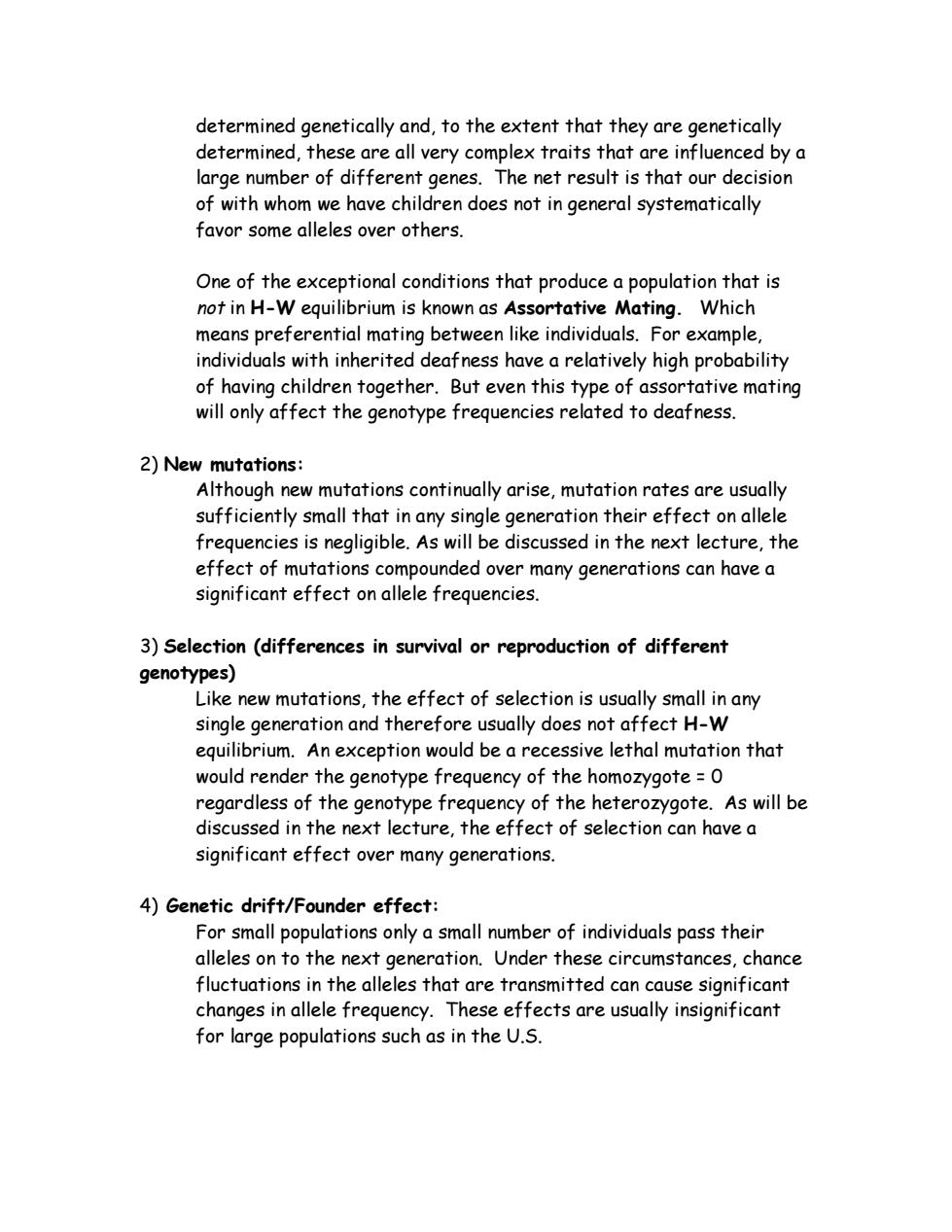正在加载图片...

determined genetically and,to the extent that they are genetically determined,these are all very complex traits that are influenced by a large number of different genes.The net result is that our decision of with whom we have children does not in general systematically favor some alleles over others. One of the exceptional conditions that produce a population that is not in H-W equilibrium is known as Assortative Mating.Which means preferential mating between like individuals.For example, individuals with inherited deafness have a relatively high probability of having children together.But even this type of assortative mating will only affect the genotype frequencies related to deafness. 2)New mutations: Although new mutations continually arise,mutation rates are usually sufficiently small that in any single generation their effect on allele frequencies is negligible.As will be discussed in the next lecture,the effect of mutations compounded over many generations can have a significant effect on allele frequencies. 3)Selection (differences in survival or reproduction of different genotypes) Like new mutations,the effect of selection is usually small in any single generation and therefore usually does not affect H-W equilibrium.An exception would be a recessive lethal mutation that would render the genotype frequency of the homozygote=o regardless of the genotype frequency of the heterozygote.As will be discussed in the next lecture,the effect of selection can have a significant effect over many generations. 4)Genetic drift/Founder effect: For small populations only a small number of individuals pass their alleles on to the next generation.Under these circumstances,chance fluctuations in the alleles that are transmitted can cause significant changes in allele frequency.These effects are usually insignificant for large populations such as in the U.S.determined genetically and, to the extent that they are genetically determined, these are all very complex traits that are influenced by a large number of different genes. The net result is that our decision of with whom we have children does not in general systematically favor some alleles over others. One of the exceptional conditions that produce a population that is not in H-W equilibrium is known as Assortative Mating. Which means preferential mating between like individuals. For example, individuals with inherited deafness have a relatively high probability of having children together. But even this type of assortative mating will only affect the genotype frequencies related to deafness. 2) New mutations: Although new mutations continually arise, mutation rates are usually sufficiently small that in any single generation their effect on allele frequencies is negligible. As will be discussed in the next lecture, the effect of mutations compounded over many generations can have a significant effect on allele frequencies. 3) Selection (differences in survival or reproduction of different genotypes) Like new mutations, the effect of selection is usually small in any single generation and therefore usually does not affect H-W equilibrium. An exception would be a recessive lethal mutation that would render the genotype frequency of the homozygote = 0 regardless of the genotype frequency of the heterozygote. As will be discussed in the next lecture, the effect of selection can have a significant effect over many generations. 4) Genetic drift/Founder effect: For small populations only a small number of individuals pass their alleles on to the next generation. Under these circumstances, chance fluctuations in the alleles that are transmitted can cause significant changes in allele frequency. These effects are usually insignificant for large populations such as in the U.S